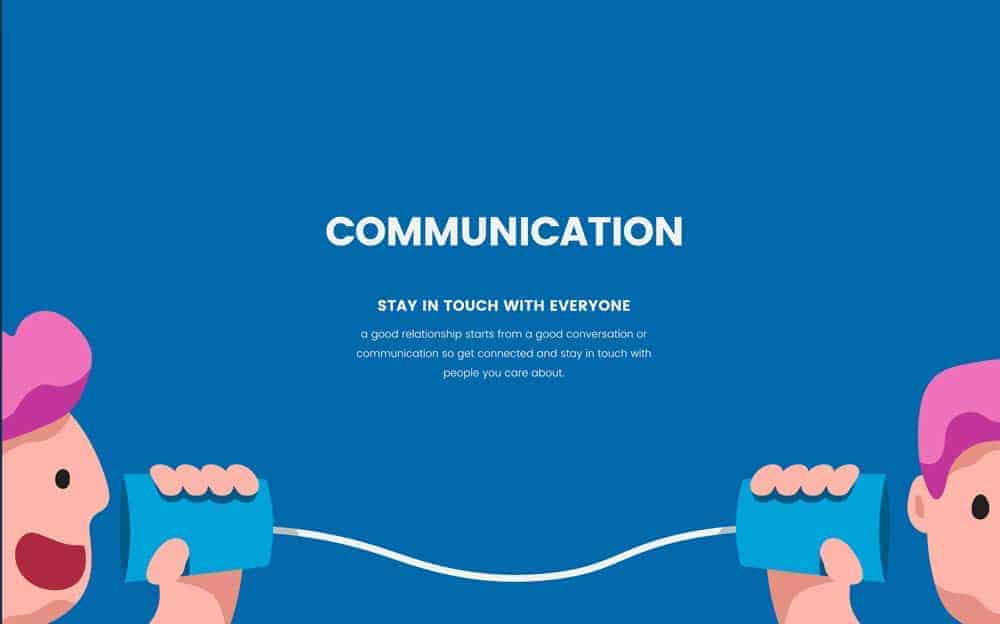The importance of context provides value and comprehension in meaning. In short, it clarifies what you want to say. You can create the best content and marketing strategy, but if your audience can’t understand what you’re saying, they won’t be taking action on your business.
Too much thought on your message can be overwhelming, and too little message makes it hard for customers to comprehend your content. Context is a bridge between you and the receiver. It can make the go or stay to and invest time for your content.

How do we communicate?
Every day, people strive to communicate efficiently and get their message understood either verbal or in writing. When they impart a message that doesn’t echo their meaning or sentiments, their recipients can misunderstand or misinterpret their word and results in conflict.
Conflict in marketing messages can lead to customer’s frustration, wasted budget and effort, and missed B2B or sales opportunities. When conflict arises business progress will become hindered.
Therefore, the importance of context in the communication process is integral. If you can’t provide a coherent message to the receiver, likewise he or she can’t provide you with valuable feedback.
Source
The source is the sender of the message. In other words, it’s you – or your company, marketing team, etc. The message you’re carrying should be clear in context as it came from you. It’ll be the first source of info people will hear. Ask yourself these questions:
- What do you wish to convey?
- Why is it important?
- How do you wish to deliver it?
- What’s the reaction you want to gauge from the audience?
- How will it affect you in return?
Encoding
Encoding is the process of organizing or structuring your message that the receiver will be able to comprehend or understand. How you convey information should be clear, simple, and relevant. Encoding the message can be tricky for some people because you don’t want to sound overwhelming, mean, or disrespectful.
For instance, you have to be careful of any emotional, economic, or cultural factors that can mar your message to the recipient and create conflict. Key considerations you need to take note of the importance of context when encoding is:
- Structure of the message
- Language used to communicate effectively
- How to deliver the message
- Audience background (culture, demographics, likes and dislikes, religion, etc.)
- How well the recipient understand the topic of the message
- How long is the message and how long you can expect feedback
- Weight and importance of the message to the recipient
The importance of context in this matter consists of

Channel
A channel is where and how to send your message. For instance, your message can be delivered through face-to-face, telephone, video calls, SMS, or emails. Your marketing strategy can also be delivered as social media posts, infographics, blog posts, videos, or charts and graphs.
Your channels have the pros and cons of delivering messages. For instance:
Verbal
Face-to-face
A conversation between parties is highly effective than sending an SMS message. This channel allows proper conveying of the importance of context of your message. What’s more, the recipient can understand and give feedback to what you’re communicating with. However, when it comes to face-to-face conversations, it’s more time-consuming.
Pros
- Quality context
- Allow meaningful feedback
- Sends highly effective conversation and exchange of items and ideas
Cons
- Time-consuming
- Wasted energy and finances
Phone
Phone conversations are meant to be short, lest you want to risk with your phone bill and the number of customers waiting in line for their calls. Personal calls should be left at home or with a smartphone. One advantage of a phone call is that it helps clarify what the recipient saw on written communication.
Pros
- Allows short, simple, and concise conversing
- Good for long-distance conversations
- Viewed as more professional
Cons
- Can only converse to one recipient at a time
- Racking up of phone bills
Video Calls
Video calls have been steadily improving these few years. The sender and recipient can not only see and discuss with one another, but they can also exchange files and video capture their present site status. The one challenge people face with video calls is the net connection.
Pros
- Allows face-to-face conversations
- Can send files, documents, and links to vital matters
- Allows real-time screen recording of video documentations
Cons
- Needs quality specs from computer
- Requires good internet connection
Non-verbal
SMS Messaging
SMS is often used by companies to blast marketing messages to customers. It doesn’t have to be that long and the message can redirect the recipient to a web link for more information.
Pros
- Fast and better open-rate of messages
- Good context and concise messaging of information
- Handy and convenient – used for long-distant customers
Cons
- Can be costly to blast hundreds to thousands of messages
- Can be hard for those with budget restraints
Email is a very professional way to get in touch with customers. What’s more, you can utilize this medium for online marketing strategies to boost your sales. Besides, your prospects even prefer to reach you by email.
Pros
- Allows long-distance communication
- Easy to convey the message to customers
- Allows better service for business transactions
Cons
- Business email may seem like spam and can irritate customers
- You need time and the right skills to pull off a great email marketing
Print – letters, documents, posters
The truth is – most people want information on paper as less as it can be. No one wants to read a manual – everyone’s busy! Keep your letters and documents at a max of 2 pages if you can, unless it’s a requested file report.
Pros
- Can convey large information than SMS and email
- Customer retention of the message is better
- Personalization and segmentation of messages
Cons
- Can be costly to print
- Location-based only
Social media
Social media is ideal for marketing your product or content. However, it’s not a good basis for discussion as evident in comments on posts. Even messenger redirects your queries back to the website or their email. However, this is one of the most important channels one should take into consideration the importance of context. Anything can go wrong!
Pros
- Wide reach of the message conveyed
- Use of different mediums are allowed to relay information (posts, graphics, or videos)
- Cost-effective way to reach customers
Cons
- You also open yourself to trolls and bashers which can hurt your business
- You need skills to diversify your content – also, it’ll take a lot of time

Decoding
Can your recipient decode or understand your message? This is the part where the receiver comprehends the context you’ve structured in your message. Confusion can happen at this due to a lot of factors including:
- Background knowledge on the topic
- Poor proper structure of the message
- Recipient can’t understand the jargon or language specified
- The channel can’t provide valuable feedback for the recipient to ask questions
- Tone or body language used when conveying the message
Receiver
The receiver is the recipient of your message. Take note that they should meet your target demographic criteria to understand your point. You can’t easily throw in scientific jargon to marketing consultants unless they do market for pharmaceuticals or science-based companies. No doubt, you’ll want your prospects to take action or respond accordingly to your message.
Even if you carry your context properly, know that each person is different. While he or she might be under the demographics you want to attract, they will interpret your message subjectively.
Feedback
Once your message reaches the receiver, your recipient would want a platform to give their feedback. Take note, feedback can be anything including a reply, body language, and reaction, or a no-statement. Even no replies or reactions are still considered as reactions. It can show whether your campaign or message:
- Has
not reached the recipient
- Was not clear to the recipient
- The recipient was not interested
Pay attention to how your recipient gives feedback. Are they interested? Do they feel bored and apathetic with your message? If your message is a bit complex, find a simpler way to break the thought down. Always provide a channel or means of communication for feedback.
The importance of context in content is a valuable tool in providing a comprehensive message on your business strategy.




